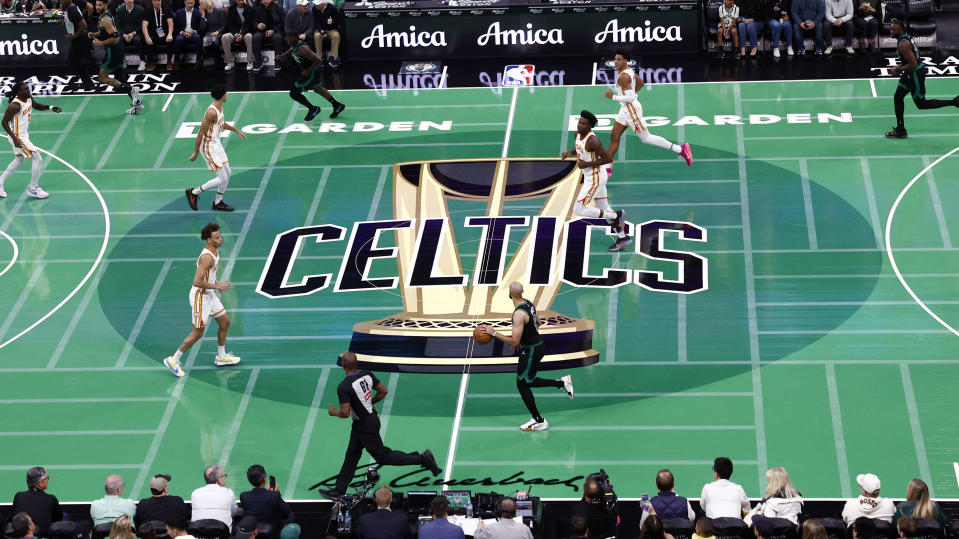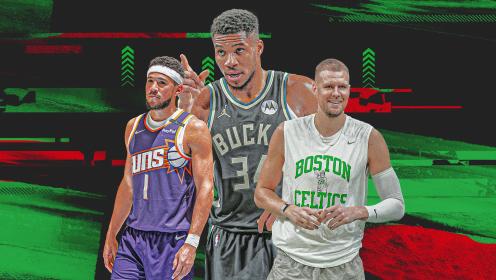Did you speak to any casual NBA fans over Thanksgiving about the NBA Cup? Because I spoke to a lot of them in the Boston area, and even the ones who knew about it could not grasp where the Celtics stood.
When you find yourself trying to explain the intricacies of the NBA Cup, you begin to understand how it has failed to capture its intended audience’s attention. Every aspect of the tournament leads to several more questions that eventually make you think, You know what. This isn’t even worth trying to explain.
Casual: “How does it work?”
Me: “There are six groups of five teams. They each play one another once. The winner of each group, along with two wild-card teams with the best records, advances to a single-elimination tournament.”
Casual: “Sounds interesting. And confusing. … So who’s in Boston’s group?”
Me [having to look it up again]: “Atlanta, Chicago, Cleveland and Washington.”
Casual: “When are the games?”
Me: “They’re on Tuesdays and Fridays during a three-week span.”
Casual: “And they have the weird courts for those games.”
Me: “Correct!”


Casual: “It distracts me from the game.”
Me: “Same.”
Casual: “Did the Celtics win their group?”
Me: “The Hawks did.”
Casual: “What was their record?”
Me: “3-1, same as the Celtics, except the Hawks beat the Celtics head-to-head.”
Casual: “That makes sense!”
Me: “But the Celtics can still get in the single-elimination tournament.”
Casual: “How’s that?”
Me [having to look it up again]: “They either need the Knicks to beat the Magic by 37 or the Magic to beat the Knicks and either the Bucks to beat the Pistons by six or the Pistons to beat the Bucks by five.”
Casual: “Yeah, I’m not following all that.”
Me [in front of a cold plate of food]: “I think I’m going to throw up.”
And … scene.
Seriously, you have to be a real basketball sicko to want to try to understand this:
The NBA created this tournament for the casual fan, trying to attract more viewers for games before Christmas. But only diehards care to understand it, and they would have watched the games anyway.
This was always my thing from the beginning: There is nothing wrong with trying the NBA Cup. Every game but the championship counts against a team’s regular-season schedule, so these games were going to be played either way. Why not turn them into something that has a shot to captivate a new audience?
The league will argue that it has seen gains from the NBA Cup. Last year’s championship tilt drew a television rating higher than any other non-Christmas regular-season game in nearly six years. The ratings for a doubleheader on the opening night of this year’s tournament increased by 71% from last season.
And that is all good. But I still do not know a single casual fan who is invested in the NBA Cup.
[NBA Cup: What’s at stake on the final day of group play]
You can just as easily argue that those ratings were driven by factors unrelated to the tournament. Last year’s title game featured LeBron James’ Los Angeles Lakers; this year’s opening-night doubleheader began with Joel Embiid’s regular-season debut and ended with Klay Thompson’s return to the Bay Area.
We are told these games matter more, and when they happen to coincide with something that would draw us in anyway, we watch. But is there a chance that telling us these games matter more is actually reminding us that other games matter less? ESPN’s NBA ratings for the season are down 28%, after all.
What people really care about is the single-elimination aspect. Even a casual can understand that.
Casual: “What happens if the Celtics win?”
Me: They advance to the next round.”
Casual: “And what happens if they lose?”
Me: “They’re eliminated from the tournament.”
Casual: “Got it.”
Me [sitting in front of a warm plate of food]: “Let’s eat.”
The solution
Give the reigning NBA Cup champions and the league’s actual defending champion a bye to the second round, let the other 28 teams duke it out, pick back up in the Sweet 16, and you have yourselves a five-round March Madness-style tournament. Nobody watching has to think beyond: Did my team advance?
There will be some quirks. The league would have to reset the schedule after each round, which is really only an expansion of what they are already doing to set the eight-team field for the existing NBA Cup.
Schedule the first four rounds on Tuesdays and Fridays over a two-week period, leading into Christmas, when the championship game should be played. The NFL is already infringing on the holiday slate, scheduling a pair of afternoon games, so let them lead into a single (somewhat) meaningful NBA game.
There, we’ve solved it. Now go enjoy the holidays, for the fun part of the NBA Cup — the eight-team, single-elimination field — is about to be set, if only we can sort out all those tiebreakers in time.

